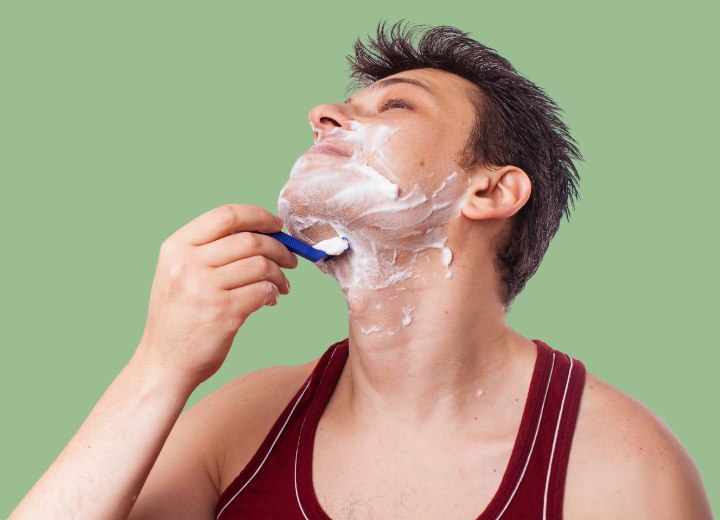Razor Bumps

A: These “razor bumps” could be what is referred to as pseudofolliculitis barbae when facial hair is involved and pseudofolliculitis pubis when pubic hairs are involved. The bumps are created when the hair curls back into the skin. The immune system sees the hair as an intruder and attacks it, creating red, inflamed areas. These bumps are susceptible and can turn into what is called “barber’s rash”.
Typically, treating razor bumps and barber’s rash involves letting the hair grow for 3-4 weeks without shaving to allow the hair to grow enough to spring out of the follicle and allow the follicle to heal. Some people find that a mild, topical corticosteroid cream helps with inflammation and pain. Washing the area with antibacterial cleanser can also help to reduce bacteria. In severe cases, your doctor may prescribe medication or antibiotics.
Razor bumps tend to be more commonly caused by attempts to achieve a much closer shave, such as using multi-bladed razors, pulling the skin taut and shaving against the growth direction of the hair. Some tips for preventing these reactions include:
• use warm water to soften the skin and hairs before shaving, or shave right after you shower
• apply your shaving cream in the opposite direction of hair growth, moisturizing your skin as well as hair
• shave the easier areas first – jaw line, cheeks, and neck
• shave in the direction of hair growth and do not stretch the skin while shaving
• use a single-bladed razor and rinse it thoroughly after each pass, then replace the blade (or disposable razor) at least once a week or as often as necessary
• use an electric razor to help prevent razor bumps or barber’s rash
Take care to treat the razor bumps you have already while avoiding others to prevent infection and a worsening of the skin’s condition. If the skin seems to become more irritated, see your doctor for additional treatment. One of the things all young men (and women) must learn is how to care for “their skin’s” particular needs in hair removal and shaving.
©Hairfinder.com
See also:
Shaving
Men's grooming